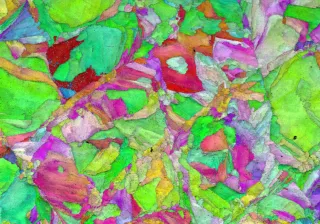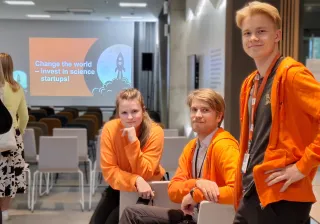Product and system design can be enhanced and speeded up in many ways. Today, we take it for granted that we have smartphones with which we can shoot video and take selfies. We are also quite used to hybrid cars with adjustable cruise control and lane departure warning systems.
- Underlying all these is a huge body of research, technological development, and design. These devices that are part of our everyday lives now would have been considered miracles twenty years ago, says Research Team Leader Juha Kortelainen.

Three ways to pump up the design process
Kortelainen notes that VTT research to improve design work concentrates on three focus areas for enhanced obtaining of information on end-user needs, automating design and making solutions compliant with sustainable development throughout their life span.
- Customer as designer: We aim to bring end user needs into the design process at the start by collecting data, interviewing users and using virtual technologies.
- Artificial intelligence as designer: We aim to free up designer capacity by automating routine tasks using artificial intelligence. We optimise structures and properties by using programme tools that suggest options and offer solutions. We also use illustrative virtual tools that render a product or solution that has been designed into a form for sensory inspection, as in a virtual game.
- Life cycle optimised products: The circular economy principle requires products to be optimised for their entire life cycle, not only for short-term business needs. When we begin to demand that products be recyclable and have a small carbon footprint, we are looking at a major change in how we think. Leveraging material streams and side streams means that materials, structures, and scaling must be selected on different principles than before, and decisions on these must be made at the design stage.
VTT ProperTune™ halves the design time for new materials
VTT uses cutting-edge methods in design: machine learning, data analytics, and virtual design.
Traditionally, new material design has proceeded through time-consuming experimental development, but VTT ProperTune can cut the design time in half. The service concept includes computing, modelling, computer simulations and a deep level of expertise to speed up materials design and optimisation of properties. With VTT ProperTune and the assistance of a VTT expert, businesses can optimise the material properties of their products according to their use, which translates into a competitive advantage on the market.
Increased ecosystem thinking
Kortelainen would like to see more partnerships in Finland making use of local, domestic expertise. Businesses need the latest research findings but also the technical solutions and the support and training services offered by service providers.
- We can do more by doing things together with the right partners and by listening to each other. Better dialogue helps us bring better products to market more quickly.
This article was originally published on 2.4.2019 and updated on 28.8.2020.






